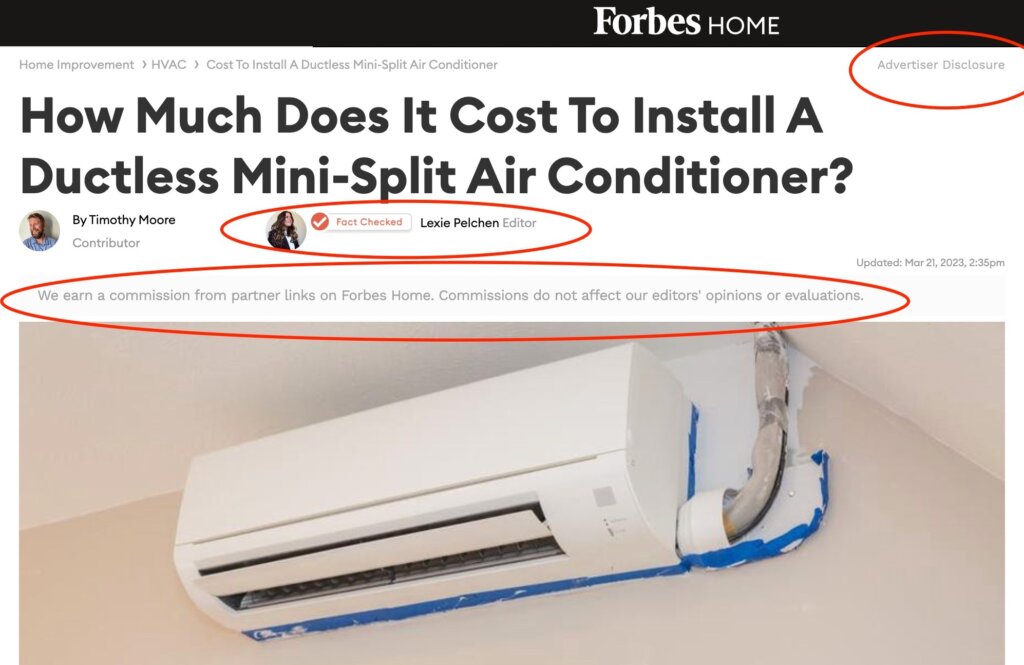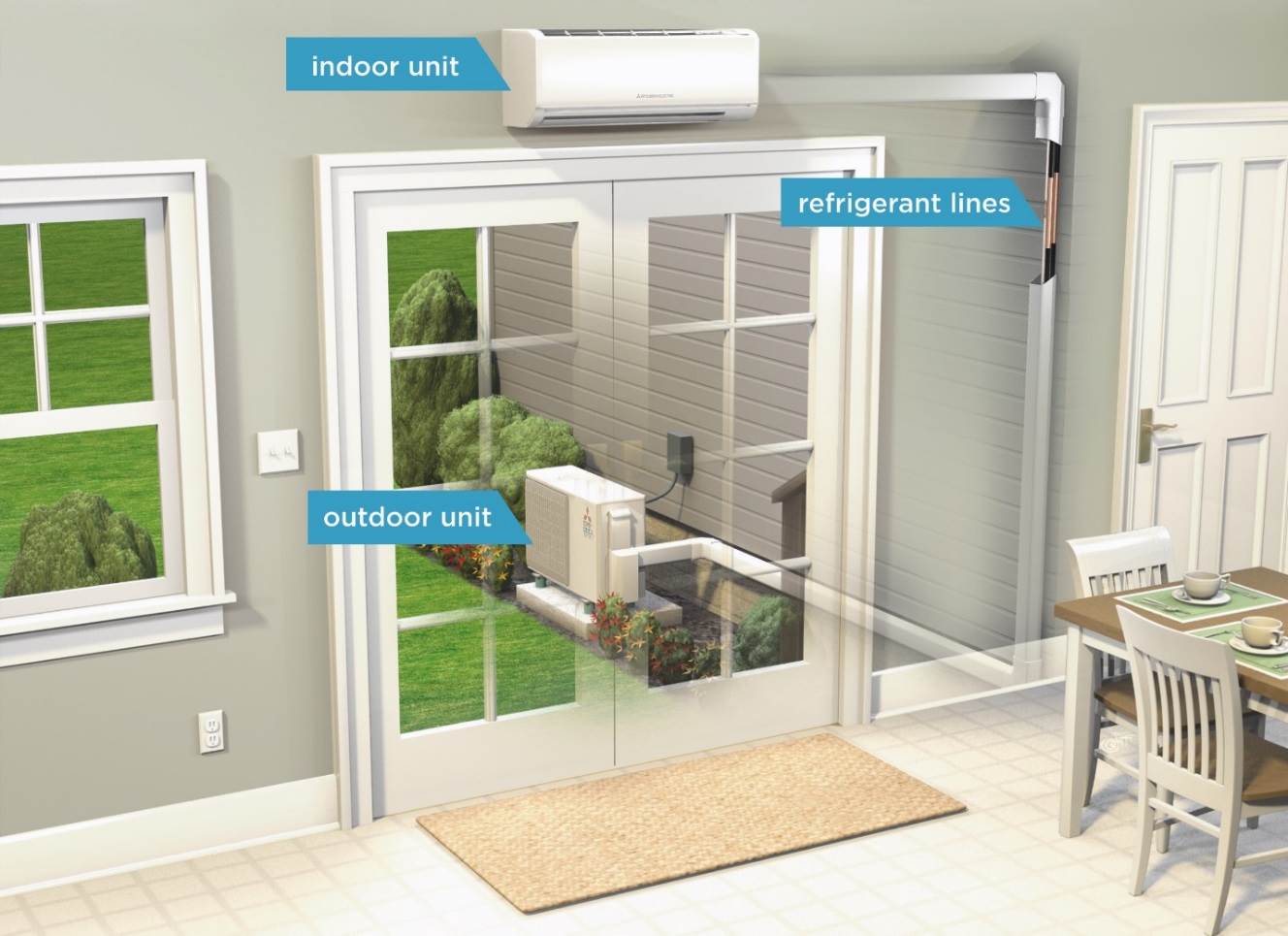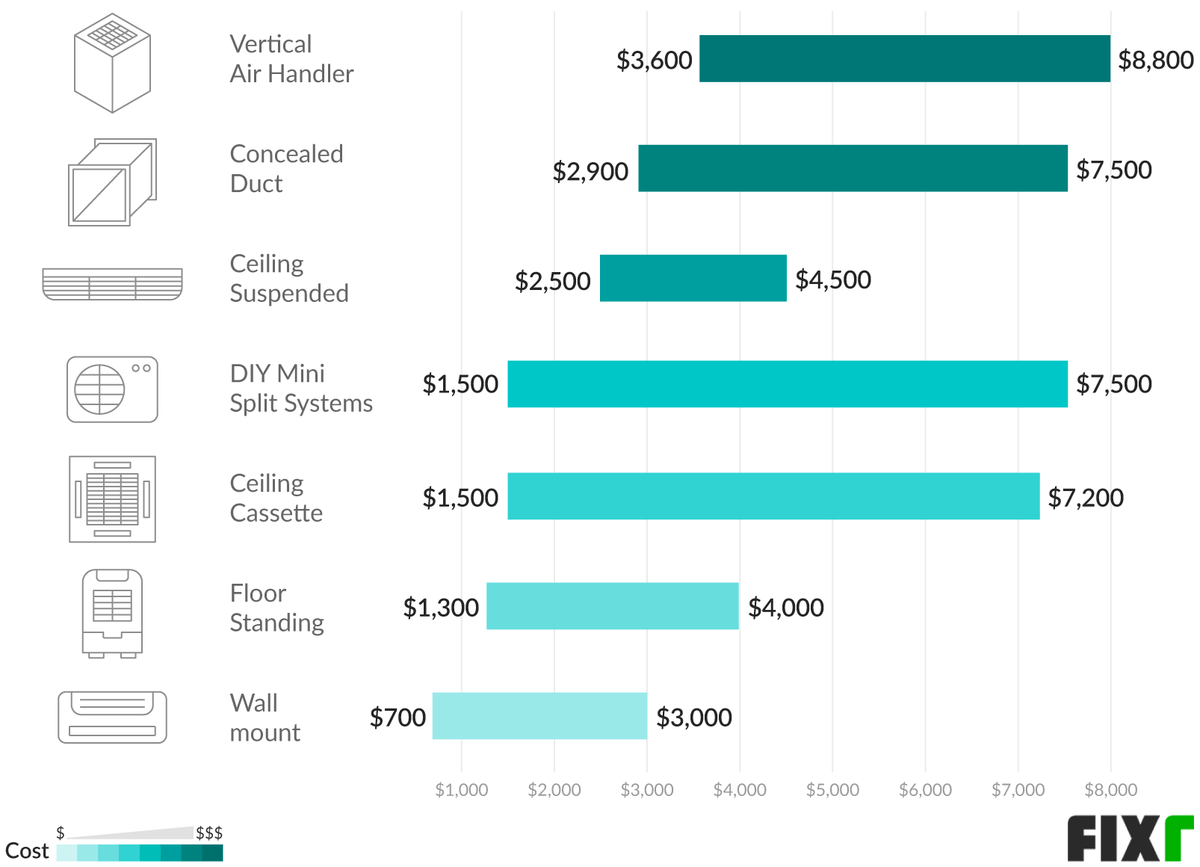How Much Does A Ductless Mini Split Cost

Frequently Asked Questions About Ductless Mini-Split Costs
Ductless mini-split systems are becoming increasingly popular for their energy efficiency and flexibility in heating and cooling individual rooms or zones. But how much do they actually cost? This FAQ provides a clear and concise overview to help you understand the costs associated with installing and operating a ductless mini-split system.
Q1: What is the average *initial* cost of a ductless mini-split system, and what factors influence it?
The average initial cost for a ductless mini-split system typically ranges from $3,000 to $8,000, including both the equipment and installation. However, this is a broad estimate, and several factors can significantly influence the final price:
- Number of Zones (Indoor Units): The more indoor units (also called air handlers) you need, the higher the cost. Single-zone systems (one outdoor unit connected to one indoor unit) are the least expensive, while multi-zone systems (one outdoor unit connected to multiple indoor units) will cost more. Expect to pay an additional $800-$1,500 per indoor unit on average.
- BTU (British Thermal Units) Rating: BTU rating indicates the cooling and heating capacity of the system. Larger rooms or spaces require systems with higher BTU ratings, which are more expensive. A system designed for a small bedroom will cost less than a system designed for a large living room.
- System Efficiency (SEER and HSPF): Systems with higher Seasonal Energy Efficiency Ratio (SEER) ratings for cooling and Heating Seasonal Performance Factor (HSPF) ratings for heating are more energy-efficient but usually come with a higher upfront cost. While the initial investment is higher, the long-term energy savings can often offset the difference.
- Brand and Model: Reputable brands with advanced features (like smart controls or advanced filtration) generally cost more. Premium models within a brand's lineup will also have a higher price tag.
- Installation Complexity: The complexity of the installation can significantly impact the labor costs. Factors like the accessibility of the outdoor unit location, the need for extensive electrical work, and the difficulty of running refrigerant lines can all increase installation costs.
- Installation Company and Location: Labor rates vary depending on the installation company and your geographic location. Metropolitan areas typically have higher labor costs than rural areas. Getting quotes from multiple installers is crucial for finding the best price.
- Permits and Inspections: Depending on your local regulations, you may need to obtain permits and inspections, which can add to the overall cost.
To get an accurate estimate, it's best to consult with a qualified HVAC professional who can assess your specific needs and provide a customized quote.
Q2: Can you break down the costs? What's the typical breakdown between equipment and labor?
A typical breakdown of the costs associated with ductless mini-split installation is generally as follows:
- Equipment Costs (40-60%): This includes the outdoor condenser unit, the indoor air handler(s), refrigerant lines, and any necessary accessories like remote controls or wall mounting brackets. The percentage can vary depending on the chosen brand, SEER/HSPF rating, and the number of zones.
- Labor Costs (40-60%): This covers the cost of professional installation, including mounting the units, running refrigerant lines and electrical wiring, connecting the system, testing its performance, and explaining its operation. Complex installations with multiple zones or challenging access points will naturally have higher labor costs.
- Permits and Inspections (negligible to 5%): Depending on your municipality, permit fees and inspection costs can be a factor. Some installers include permit costs in their overall quote, while others list them separately.
It's important to ask for a detailed quote that clearly outlines the cost of each component, including equipment, labor, and any additional fees. Don't hesitate to ask for clarification if anything is unclear.
Q3: Are there any ongoing costs associated with owning a ductless mini-split system, such as maintenance or energy consumption?
Yes, like any HVAC system, ductless mini-splits have ongoing costs that you should factor into your budget:
- Energy Consumption: This is the most significant ongoing cost. Ductless mini-splits are generally energy-efficient, but your energy consumption will depend on factors like usage habits, climate, insulation levels, and the system's SEER and HSPF ratings. Running the system frequently at high settings will increase your energy bills.
- Maintenance: Regular maintenance is crucial for ensuring the system's efficiency and longevity. This includes cleaning the air filters every 1-3 months and having a professional HVAC technician inspect the system annually. Professional maintenance typically costs between $100 and $300 per visit, depending on the system's complexity and the technician's rates.
- Repairs: Like any mechanical system, ductless mini-splits can experience occasional breakdowns or require repairs. The cost of repairs will depend on the nature of the problem and the cost of replacement parts. Choosing a reputable brand and ensuring proper installation and maintenance can help minimize the risk of costly repairs.
- Filter Replacement: While cleaning the air filters is important, they will eventually need to be replaced. Replacement filters are relatively inexpensive, typically costing $10-$30 per filter.
By performing regular maintenance and using the system efficiently, you can minimize ongoing costs and maximize the lifespan of your ductless mini-split.
Q4: Are there any rebates, tax credits, or financing options available to help offset the cost of a ductless mini-split system?
Yes, various incentives can help reduce the cost of purchasing and installing a ductless mini-split system:
- Federal Tax Credits: The federal government often offers tax credits for energy-efficient HVAC systems, including ductless mini-splits. These credits can significantly reduce your overall cost. Consult the IRS website or a tax professional for the latest information on available credits and eligibility requirements. The Inflation Reduction Act of 2022, for example, includes provisions for tax credits on qualified energy-efficient home improvements.
- State and Local Rebates: Many states and local utility companies offer rebates for installing energy-efficient HVAC systems. These rebates can vary in amount and eligibility requirements, so it's essential to check with your local utility company and state energy office.
- Manufacturer Rebates: Some manufacturers offer rebates on their ductless mini-split systems. These rebates are typically offered for a limited time and may have specific requirements.
- Financing Options: Many HVAC installers and financial institutions offer financing options for ductless mini-split systems. These options can help you spread the cost over time, making it more manageable. Be sure to compare interest rates and terms before choosing a financing option.
- Energy Efficiency Programs: Some energy efficiency programs offer grants or low-interest loans for energy-efficient home improvements, including ductless mini-split installation.
Researching and taking advantage of available rebates, tax credits, and financing options can significantly reduce the upfront cost of your ductless mini-split system.
Q5: How does the cost of a ductless mini-split compare to traditional HVAC systems like central air conditioning?
The cost comparison between ductless mini-splits and traditional central air conditioning systems is complex and depends on several factors:
- Initial Cost: Ductless mini-splits can be *more expensive* upfront than traditional central air conditioning systems, especially for whole-house solutions. However, for single-room or zoned cooling, they can sometimes be *more affordable*.
- Installation Cost: Ductless mini-splits generally have lower installation costs compared to central air conditioning, particularly in homes without existing ductwork. Installing ductwork can be a significant expense, making ductless systems a more cost-effective option in some cases.
- Energy Efficiency: Ductless mini-splits are typically more energy-efficient than central air conditioning systems, leading to lower energy bills over time. This is because they only cool or heat the rooms you're using, eliminating energy waste from duct losses.
- Zoning Capabilities: Ductless mini-splits excel at zoning, allowing you to control the temperature in individual rooms. Central air conditioning systems can be zoned, but it typically requires additional dampers and controls, adding to the cost.
- Maintenance Costs: Maintenance costs for ductless mini-splits are generally similar to those of central air conditioning systems.
- Lifespan: The lifespan of both types of systems is comparable, typically ranging from 15 to 20 years with proper maintenance.
In summary, while the initial cost of a ductless mini-split might be higher in some cases, the lower installation costs (especially in homes without ductwork) and superior energy efficiency can make them a more cost-effective option in the long run. Consider your specific needs, budget, and the characteristics of your home to determine which system is the best fit.
Q6: What size mini-split do I need, and how does the size affect the price?
Determining the correct size of a ductless mini-split system is crucial for optimal performance and energy efficiency. Size is measured in BTUs (British Thermal Units), which represent the amount of heat the system can remove from a room per hour. An undersized system will struggle to cool or heat the space adequately, while an oversized system can lead to short cycling, reduced efficiency, and inconsistent temperatures.
Here's a general guideline for sizing ductless mini-splits based on room size, but it's always best to consult with an HVAC professional for a precise calculation:
- 150-250 sq ft: 5,000 - 6,000 BTU
- 250-300 sq ft: 7,000 - 8,000 BTU
- 300-400 sq ft: 9,000 - 12,000 BTU
- 400-500 sq ft: 12,000 - 14,000 BTU
- 500-700 sq ft: 14,000 - 18,000 BTU
- 700-1,000 sq ft: 18,000 - 24,000 BTU
These are just rough estimates. Several other factors can influence the required BTU rating, including:
- Climate: Warmer climates require higher BTU ratings.
- Insulation: Poorly insulated rooms require higher BTU ratings.
- Windows: Rooms with many windows or large windows require higher BTU ratings.
- Ceiling Height: High ceilings require higher BTU ratings.
- Sun Exposure: Rooms with direct sun exposure require higher BTU ratings.
- Number of Occupants: Rooms with more occupants require higher BTU ratings.
- Heat-Generating Appliances: Rooms with appliances that generate heat (e.g., kitchens) require higher BTU ratings.
Impact on Price: Generally, the higher the BTU rating, the higher the price of the ductless mini-split system. Larger systems require more powerful components and more refrigerant, which contribute to the increased cost.
Q7: What are some ways to keep ductless mini-split costs down?
There are several things a homeowner can do to control or reduce the expense of a ductless mini-split system, both in the short and long term. Consider these strategies:
- Obtain Multiple Quotes: Always get quotes from at least three reputable HVAC contractors. Prices can vary considerably, so comparing quotes will help you find the best deal. Ensure each quote is detailed, outlining the equipment cost, labor, permit fees (if applicable), and any other related expenses.
- Choose the Right Size and Number of Units: Work with a professional to properly size the mini-split system for the area you need to heat or cool. Avoid oversizing, as this can lead to inefficiency and higher costs. Consider whether you truly need to heat or cool every room, or whether zoning with fewer units might be a more economical approach.
- Opt for Energy-Efficient Models: While models with higher SEER and HSPF ratings might have a higher upfront cost, they can save you significant money on energy bills over the system's lifespan. Calculate the long-term savings by comparing the estimated annual operating costs of different models.
- Look for Rebates and Incentives: Research and take advantage of available rebates, tax credits, and financing options offered by federal, state, and local governments, as well as utility companies and manufacturers. These incentives can substantially reduce the overall cost.
- Negotiate with the Installer: Don't be afraid to negotiate the price with the installer. You might be able to get a discount on the equipment or labor costs, especially if you are getting multiple units installed.
- Consider Installation Complexity: Simple installations with easy access to the outdoor unit location and minimal electrical work will be less expensive. If possible, choose a location that minimizes installation complexity.
- Perform Regular Maintenance: Regular maintenance, such as cleaning the air filters every 1-3 months and scheduling annual professional inspections, can help keep the system running efficiently and prevent costly repairs. A well-maintained system will last longer and consume less energy.
- Use the System Wisely: Avoid running the system unnecessarily when you're not home. Use a programmable thermostat to set back the temperature when you're away or asleep. Close curtains and blinds during the hottest part of the day to reduce the cooling load.
- Proper Insulation and Sealing: Ensure your home is properly insulated and sealed to prevent air leaks. This will reduce the amount of energy needed to heat or cool your home, saving you money on energy bills.
- Consider a DIY-Friendly Option for Certain Tasks: While the actual installation should be done by a professional, some minor tasks like cleaning the outdoor unit or replacing air filters can be done yourself, saving you on maintenance costs.










